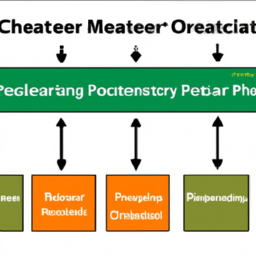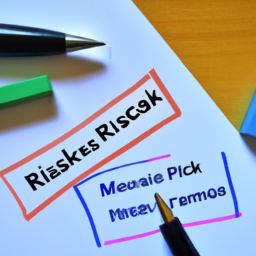Are you ready to embark on a project management journey where quality is the ultimate destination? Well, brace yourself, because in this article, we will explore the role of leadership in effective project quality management.
It’s quite ironic how often project quality is overlooked or treated as an afterthought, considering its crucial impact on the success of any endeavor. But fear not, dear reader, for effective leadership is here to save the day!
With a clear vision and direction, leaders set the tone and ensure that quality is at the forefront of every decision and action. They create a culture where excellence is not just a buzzword, but a way of life. By empowering the project team, leaders foster a sense of ownership and accountability, driving them to deliver top-notch results.
And let’s not forget about the establishment of quality processes and standards, as well as the diligent monitoring and evaluation of project quality. Leadership, my friend, is the key ingredient that ensures your project’s success and leaves a lasting impact.
So, buckle up and let’s dive into the world of effective project quality management!
Key Takeaways
- Leadership plays a crucial role in setting the tone and prioritizing quality in project management.
- Continuous improvement should be encouraged and valued, with opportunities for professional development and rewards for individuals seeking improvement.
- Accountability and collaboration are essential for achieving high-quality outcomes, with a focus on continuous learning, feedback loops, and clear guidelines and expectations.
- Effective leadership involves leading by example, inspiring and motivating team members, and creating a culture of excellence where team members take ownership and engage in project success.
Setting a Clear Vision and Direction
The leader’s clear vision and direction act as a lighthouse, guiding the project team through the challenging waters of project quality management.
By developing effective communication channels, the leader ensures that every team member understands the project’s goals, objectives, and expectations. This clarity allows for a smooth flow of information and ideas, minimizing misunderstandings and conflicts.
Additionally, the leader fosters collaboration by encouraging open dialogue and active participation from all team members. This creates a sense of ownership and accountability, as well as an environment where diverse perspectives and expertise can be leveraged to drive quality improvement initiatives.
By setting a clear vision and direction, the leader not only establishes a framework for success but also creates a foundation for creating a culture of quality. This involves promoting a shared commitment to continuous improvement and a focus on delivering high-quality outcomes.
Creating a Culture of Quality
To promote a commitment to excellence, you can start by clearly communicating your expectations for quality standards and holding your team accountable for meeting them.
Encourage continuous improvement by creating a culture that values learning and innovation.
Provide opportunities for professional development and reward individuals who actively seek out ways to improve processes and deliver higher quality results.
Promoting a Commitment to Excellence
Immerse yourself in a culture of unwavering dedication to excellence, and watch as your project quality management soars to new heights.
Ensuring accountability is crucial for achieving high-quality outcomes. By holding team members responsible for their actions and decisions, you create a sense of ownership and empower them to take pride in their work.
Fostering collaboration is equally important, as it encourages individuals to share their expertise, learn from one another, and collectively solve problems.
Together, these practices create a strong foundation for promoting a commitment to excellence within your project team.
Transitioning into the subsequent section about encouraging continuous improvement, it is imperative to recognize that fostering a culture of excellence is just the first step.
Encouraging Continuous Improvement
Take a leap forward and embrace the path of growth and progress by encouraging continuous improvement within your project team. Continuous learning and feedback loops are key elements in driving the success of any project. By creating an environment that fosters ongoing learning, you empower your team to constantly improve their skills and knowledge. Encourage them to seek out new training opportunities, attend industry conferences, and engage in peer-to-peer knowledge sharing. Additionally, establish feedback loops where team members can regularly provide input and suggestions for improvement. This not only allows for continuous improvement on an individual level, but also enables the team as a whole to identify areas for growth and make necessary adjustments. By prioritizing continuous improvement, you lay the foundation for a high-performing team that is constantly evolving and adapting to new challenges. As you transition into the subsequent section about empowering the project team, remember that continuous improvement goes hand in hand with empowering team members to take ownership and drive their own growth.
Empowering the Project Team
You can truly empower the project team by fostering an environment of trust and autonomy. This begins with team motivation, where you need to understand what motivates each team member and provide them with the necessary support and resources to achieve their goals.
Effective communication is also crucial in empowering the team. You should encourage open and honest communication, ensuring that everyone feels comfortable sharing their ideas and concerns. This will help create a collaborative environment where team members feel valued and empowered to contribute their best work.
By empowering the project team in this way, you can establish quality processes and standards that will drive success.
Transitioning to the next section, it’s important to establish clear guidelines and expectations to ensure consistency and accountability.
Establishing Quality Processes and Standards
Ensure that clear guidelines and expectations are established to promote consistency and accountability in the establishment of quality processes and standards. By doing so, you are ensuring compliance with project requirements and industry standards, while also fostering a culture of quality assurance within the project team. This will help to minimize errors, defects, and rework, ultimately improving the overall quality of the project deliverables. To assist you in this process, the following table provides a framework for establishing quality processes and standards:
| Process | Description | Responsible Party |
|---|---|---|
| Planning | Defining quality objectives and determining the required processes and resources. | Project Manager |
| Documentation | Creating and maintaining the necessary documentation to support quality processes. | Quality Assurance Team |
| Training | Providing training and development opportunities to enhance the team’s understanding of quality standards. | Project Team Members |
| Monitoring | Regularly reviewing and evaluating the effectiveness of quality processes and standards. | Quality Control Team |
By following these guidelines and incorporating these quality processes and standards, you are setting the foundation for effective project quality management. Transitioning into the subsequent section about ‘monitoring and evaluating project quality’, it is important to regularly assess the performance of these established processes to ensure continuous improvement and successful project outcomes.
Monitoring and Evaluating Project Quality
Monitoring and evaluating project quality is crucial for identifying areas of improvement and driving continuous enhancement in the project’s deliverables. It ensures that the project meets the quality standards set during the planning phase.
Quality control involves monitoring the project’s processes and outputs to identify any deviations or defects. This includes conducting inspections, reviewing documents, and performing tests to ensure that the project meets the required quality criteria.
On the other hand, quality assurance focuses on preventing defects by implementing processes and procedures that promote quality throughout the project lifecycle. This includes establishing quality standards, conducting audits, and implementing corrective actions when necessary.
By implementing effective monitoring and evaluation processes for project quality, leaders can ensure that the project’s deliverables meet the required standards and continuously improve.
Moving forward, leading by example is another crucial aspect of effective project quality management.
Leading by Example
Exemplifying high standards and practices is pivotal in inspiring and motivating team members to strive for excellence in their work. As a leader, your ability to lead by example sets the tone for the entire project team. When you consistently demonstrate a strong work ethic, attention to detail, and a commitment to quality, you inspire others to do the same.
By consistently delivering high-quality work and adhering to project standards, you foster accountability within the team. Team members will see your dedication and be motivated to meet and exceed expectations. Additionally, leading by example helps to build trust and credibility among team members, as they see that you’re not simply telling them what to do, but are actively engaged in the project’s success.
By consistently demonstrating these qualities, you create a culture of excellence and inspire team members to take ownership of their work.
Frequently Asked Questions
How can leaders effectively communicate the project vision and direction to their team members?
To effectively communicate the project vision and direction to your team members, begin by clearly articulating your goals and expectations. Use motivational techniques such as setting challenging but achievable targets to inspire your team.
Ensure that your communication is clear and concise, avoiding any ambiguity. Provide regular updates and feedback to keep everyone informed and engaged. Use visual aids, such as charts or diagrams, to help convey complex information.
Finally, encourage open dialogue and actively listen to your team members’ input and concerns.
What strategies can leaders implement to foster a culture of quality within the project team?
To foster a culture of quality within your project team, imagine yourself as a conductor leading an orchestra. Just as a conductor brings together different musicians to create harmonious music, you need to foster collaboration among team members.
Encourage open communication, promote teamwork, and create an environment where ideas can flourish. Additionally, emphasize the importance of continuous improvement by setting clear goals, providing feedback, and offering opportunities for professional development.
By implementing these strategies, you can create a team that strives for excellence and consistently delivers high-quality results.
How can leaders empower their project team members to take ownership and responsibility for the quality of their work?
To empower your project team members to take ownership and responsibility for the quality of their work, you can implement various empowerment techniques and accountability measures.
Encourage open communication and provide them with the necessary resources and support.
Foster a culture of continuous learning and improvement by promoting training and development opportunities.
Set clear expectations and hold team members accountable for their actions.
Recognize and reward high-quality work to motivate and inspire them to excel.
What are some key components of establishing effective quality processes and standards within a project?
To establish effective quality processes and standards within a project, you need to focus on several key components.
First, establish clear and measurable quality objectives that align with project goals.
Then, develop detailed processes and guidelines for quality control and assurance. This includes defining standards for deliverables, conducting regular inspections and audits, and implementing corrective actions when necessary.
Finally, ensure that all team members are trained on these processes and standards to maintain consistency and accountability throughout the project.
How can leaders effectively monitor and evaluate the quality of the project throughout its duration?
To effectively monitor and evaluate the quality of a project throughout its duration, leaders must employ various techniques.
One such technique is regular progress meetings, where leaders can gather feedback from team members and address any concerns.
Additionally, leaders can use evaluation methods such as checklists and quality audits to ensure that project standards are met.
By actively monitoring and evaluating the project’s quality, leaders can make informed decisions and take corrective actions to ensure its success.
Conclusion
Congratulations! You’ve successfully explored the crucial role of leadership in effective project quality management.
By setting a clear vision and direction, creating a culture of quality, and empowering the project team, leaders become the driving force behind successful outcomes.
They also establish quality processes and standards, and monitor and evaluate project quality.
Just like a skilled conductor leading a symphony, they orchestrate the harmonious blend of talent and resources, ensuring every note is precise and every performance is extraordinary.
With their meticulous attention to detail, analytical mindset, and strategic approach, these leaders pave the way for project excellence.



















